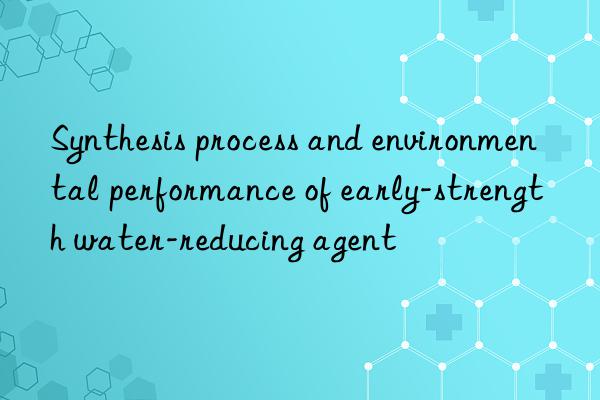
Water reducing agent is one of the main raw materials for the production of high-performance concrete. There are also some water reducing agents on the domestic market at present. However, when it comes to environmental protection and high alkaline water efficiency, it is an aliphatic water reducing agent. Aliphatic water-reducing agent is a new type of water-reducing agent developed in the 1980s. Let’s take a look at its synthesis process:
It is mainly based on formaldehyde, sodium metabisulfite, sodium sulfite, etc. Raw material, anionic polymer surfactant agent prepared through sulfonation and condensation. It has the following characteristics: (1) High water reduction rate. (2) The air content is low, which is beneficial to the production of high-performance concrete. (3) The Na2S04 content is low and there is no crystallization precipitation in winter. It can be easily compounded into antifreeze and pumping agents. (4) Raw materials come from a wide range of sources. Today, when the market price of industrial naphthalene is rising, its cost performance is higher than that of naphthalene-based water reducing agents.
The reaction mechanism of aliphatic superplasticizer is relatively complex. Although different processes and formulas can produce aliphatic superplasticizers, the comprehensive properties of various products vary greatly. Factors that affect the performance of aliphatic water reducing agents include: feeding method during synthesis, reaction temperature, reaction concentration, raw material ratio, etc. The synthesis process steps are as follows:
1. Mix a portion of formaldehyde, acetone and Na2S:O evenly and set aside.
2. Add weighed tap water, Na2SOs and another part of formaldehyde to a four-necked flask equipped with a reflux condenser, thermometer, stirrer and dropping funnel. Start the stirrer and heat the water bath to 55°C. Use a dropping funnel to slowly add the above mixed solution at 55-65°C for 3-4 hours.
3. After the dropwise addition is completed, raise the temperature to 90-95~C and keep it warm for 2-3 hours to obtain an aliphatic water-reducing agent with a solid content of 35%.
The above are the characteristics of the synthesis process of aliphatic alkaline aqueous agent. Seeing here, we also learned that it is more environmentally friendly, has high alkaline water efficiency, and is more cost-effective than some similar products. It is worthy of vigorous efforts. Promotion and use.
Early-strength water-reducing admixture to improve the durability of concrete is of great significance to the current sustainable development strategy, better utilization of resources, energy conservation and environmental protection. Today I would like to introduce to you the energy-saving and environmentally friendly effects of early-strength superplasticizer:
There are bubbles on the surface after hardening. The reason is: In order to facilitate construction during use, the dosage of early-strength superplasticizer is increased. Solution: Strictly carry out construction according to the mix ratio, improve construction technology, and strengthen construction management. The setting and hardening of concrete is slow. The reason is: the amount of early-strength water-reducing agent is increased or the curing temperature is not enough. Treatment method: Construction should be carried out strictly according to the mix ratio and the maintenance time should be extended. The slump of concrete is significantly different from the design value. The reason is: incompatibility occurs when two admixtures are mixed. Solution: Do a compatibility test before use and adjust the blending ratio.
Concrete prepared with early-strength superplasticizer can meet the standards of fair-faced concrete, with a bright appearance and uniform color, a dense surface and fewer bubbles. </p



 微信扫一扫打赏
微信扫一扫打赏
